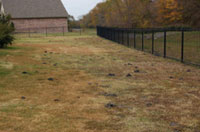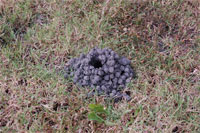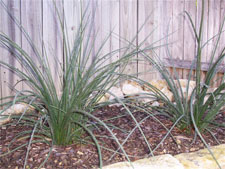Question and Answer – December 2009
Question: The attached picture shows three roses from the same bush. For a month or more, the roses may be perfect like the one on the left. Then, for a month or more, they will all be deformed like the other two. This fall, there have been some of each. The bush is in a raised bed which receives weekly watering. I have fertilized it three times this summer with moderate amounts of fertilizer. What can I do to correct this problem? J.B., Abilene
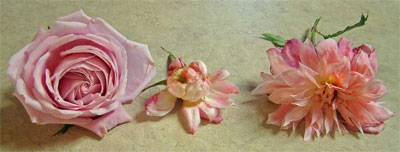
Answer: Thrips have caused your problems. Peel one of the deformed buds open, and you’ll see tiny, sliver-shaped insects moving around. They have piercing-sucking mouthparts that cause light-colored rose flowers to develop reddish blotches. They will cause all roses to turn brown and crisp around the edges of their petals. Use a systemic insecticide to prevent and eliminate them. Wait until next spring to make your first treatment. Time it to be near the average date of the last killing freeze in your area. Repeat the treatment every four weeks until fall. Hopefully, you can break the cycle with the sprays.
Question: I do not live near a lake or creek, but I have been told that I have a high water table, and that these crawfish "castles" are the result. I have one of the few lawns in the neighborhood to have them, and I have a couple of hundred. What can I do? P.V., Lucas.
Answer: The people who suggested that you have a high water table are absolutely correct. Crawfish always show up in low, poorly draining areas. Your photo shows a drainage area nearby, so water does move through the area. All the rain you’ve had in the past six weeks is probably the reason you’re seeing them now. As the soils dry out in the near future, the crawfish will become less visible. Your only recourse in the future would be to improve internal drainage of your soils via French drains or other types of field tile, but you may decide that the crawfish aren’t worth all that effort. There are no chemical remedies.
Question: We purchased these two pink yucca plants about two and a half years ago. They have grown well, and they look healthy, but they haven’t bloomed at all. Are they too young to flower? M.L., Fort Worth.
Answer: These are more commonly referred to as "red yuccas." Botanically, they’re hesperaloes, not true yuccas. Your analysis is correct. These plants need to become established in your landscape before they’ll have enough maturity to flower, especially if they were in 1- or 2-gallon pots at the outset.
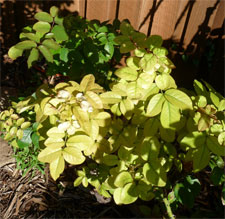
Question: Every year, our rose bush develops these leaves that turn light green, then yellow. I feed them regularly, and I follow the directions on the product’s label. Is this iron deficiency, and if so, are there any reliable remedies? Will next year’s leaves be dark green again? P.H., Dallas
Answer: Good work — you have the proper identification. As you’re seeing, iron deficiency normally shows up first on the newest growth, and the veins are usually the last parts of the leaves to lose their colors. However, it’s a little more complicated than simply putting iron around the plant. There can be underlying reasons that plants show iron deficiency. Iron becomes insoluble in alkaline soils, so the iron turns to a form that can’t go into water solution, and that prevents plants’ roots from being able to take it up. The best way to deal with it is to prepare planting soils carefully from the outset. Roses also demand good drainage, so it’s a good idea to prepare a bed that’s several inches elevated above the surrounding soils. Incorporate several inches of organic matter (peat moss, compost, rotted manure and finely ground pine bark mulch). If the native soil is clay, you should also add 1 inch of expanded shale soil conditioner with the organic matter. Rototill it all together to a depth of 8 to 12 inches. If you want to try to save this specific plant, dig it out in early February, and set it aside carefully for a few hours as you rework the bed. Trim it back by half as you replant it, and apply a liquid root stimulator plant food to help it reestablish and start growing.
Other factors can also lead to iron deficiency symptoms. Plants that have stem or root damage are sometimes unable to get enough iron into their systems. Gas leaks and errant applications of weedkillers can also lead to the yellowing.
Question: I’ve searched for years to find candletrees in nurseries. But, I found them at the Dallas Arboretum’s plant sale last spring. Can I save the seeds? How do I keep the pods from drying and splitting open before I can collect the seeds? How should I keep them over the winter? P.S., Allen.
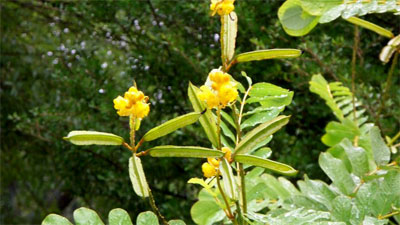
Answer: You’ll have ample warning that the pods are beginning to dry before they ever split open. Watch them closely as the next few weeks roll by. Hopefully, some of the older pods will have a chance to ripen before the first killing freeze. Don’t rush it, but as they start to crack open, carefully clip one or two pods and let them finishing drying on a piece of newspaper indoors. Collect the seeds, and store them in a dry sandwich bag in the egg/butter part of your refrigerator. Sow the seeds in pots filled with a loose, highly organic potting soil, and keep them warm (70 degrees), moist and in bright sunlight.
Question: What are these white blotches that are all over the branches of my Chinese pistachio tree — more so this year than in other recent years? The tree seems to be healthy otherwise. It’s close to a Shumard red oak, if that matters. R.B., no city given.
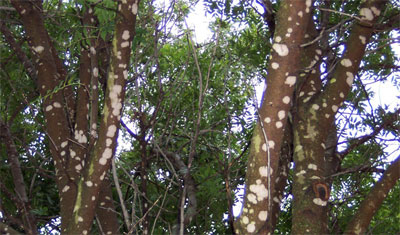
Answer: I’m not sure what this might be, but it’s certainly unattractive. It’s probably some type of fungal growth, and it may be the result of continued rainfall and high humidity this fall. Your best way of finding out what it is for certain would be to send a sample to the Plant Disease Diagnostic Laboratory at Texas A&M. You might also try spraying it with a fungicide. However, if the tree seems to be growing well, it’s probably not of major concern.
Continuing …
That was my answer, as of yesterday. As I proofed e-gardens this morning, I thought you deserved a more authoritative reply, so I asked one of Texas’ most respected arborists, Steve Houser of Arborilogical Services of DFW for his read on the issue. I need to acknowledge that they’re a long-time sponsor, but he’s also one of the best arborists I know. Here are his notes:
Neil,
This appears to be a type of fungal growth, possibly some type of lichen. As you may know, lichens are (in essence) fungal in nature and grow in a symbiotic relationship with other types of algae or bacteria. As you note, fungal growth can be stimulated by the recent rainfall and excessive humidity.
In reviewing the photo, it appears that the trunks and limbs are in the shade most of the day due to the other nearby trees. The additional shade further encourages the fungal growth. As an example, trees in the full sun seldom have this type of problem.
Since the growth is only on the outside of the bark, it is superficial and aesthetic in nature and not a problem for the trees’ health (as you noted). A tissue sample could be analyzed to identify the exact organism. I suspect that the problem will subside in the summer months to some degree. It would be wise to cut back any watering in the area to the bare minimum, avoid any standing water in the area, and increase air circulation around the trees if possible. This can be accomplished to some degree by standard pruning of the nearby trees or plants. It is primarily a cultural problem that can be aided by altering the basic management practices. If aesthetics are a major concern, fungicide treatments could be considered, but identifying the exact organism would be a good first step (as you noted).
Hope that helps.
Steve

